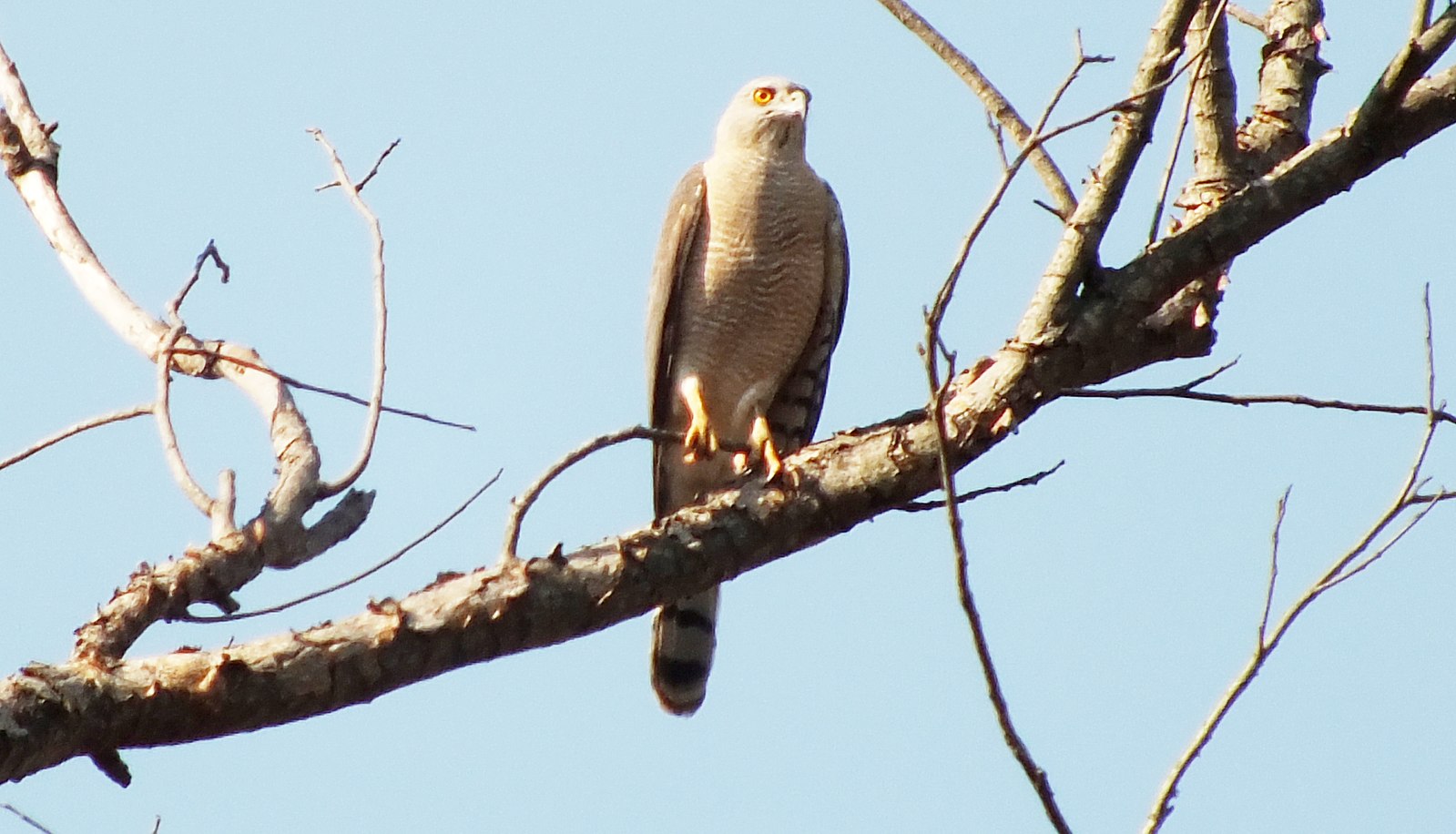The Shikra (Accipiter badius) is a small bird of prey found in Asia and Africa. Its life cycle is characterized by distinct stages, from hatching to adulthood, each with unique behaviors and adaptations. This article delves into the fascinating details of the Shikra’s life cycle, providing a comprehensive understanding of this remarkable raptor.
Appearance and Identification
Shikras are small raptors with short, rounded wings and a narrow, elongated tail. Adult males have a grey upper body and a whitish underside with fine rufous bars, while females have brownish upperparts and heavier barring on the underside. Juveniles display dark streaks and spots on the upper breast, and their wings and tails are narrowly barred.
Habitat and Distribution
 Image source: SHIKRA by Shiv’s fotografia
Image source: SHIKRA by Shiv’s fotografia
Shikras are found across Asia and Africa, inhabiting a variety of environments, including forests, woodlands, savannas, shrublands, grasslands, farmlands, plantations, gardens, and even urban areas. They are known to migrate to some extent, with birds from certain regions moving to areas like Pakistan, India, and South Asia.
Feeding Habits
Shikras are carnivorous, preying on a diverse range of small animals, including rodents, squirrels, bats, small birds and their eggs, small reptiles (mainly lizards, but sometimes small snakes), and insects. They may also occasionally feed on carrion.
Breeding and Nesting
Shikras are monogamous and form pairs for life. They breed during the summer months, typically between March and June in India. Both partners collaborate in building the nest, which is a platform structure similar to a crow’s nest, lined with grass. The female lays a clutch of 3 to 4 pale bluish-grey eggs, which she incubates for 18 to 21 days. Once the chicks hatch, the male brings food to the nest, and the female feeds the young.
Fledgling and Parental Care
The chicks usually fledge (leave the nest) when they are around one month old. During their first year of life, the young Shikras remain with their parents, learning essential hunting and survival skills.
Population and Conservation Status
According to the IUCN Red List, the total population size of the Shikra is estimated to be between 500,000 and 999,999 mature individuals. The species is currently classified as Least Concern (LC), as it does not face any major threats at present. However, the loss of native habitat and illegal trading may pose potential threats in the future.
Conclusion
The Shikra is a fascinating bird of prey with a unique life cycle adapted to its diverse habitats across Asia and Africa. From its distinctive appearance and hunting strategies to its breeding and parental care, the Shikra’s life cycle is a testament to the remarkable diversity of the avian world.
References:
- Shikra – Facts, Diet, Habitat & Pictures on Animalia.bio, https://animalia.bio/shikra?property=145
- Shikra – Wikipedia, https://en.wikipedia.org/wiki/Shikra
- Accipiter badius (J.F. Gmelin, 1788) | Species – India Biodiversity Portal, https://indiabiodiversity.org/species/show/239171


